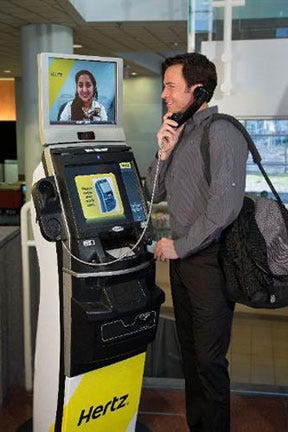Has the time of the remote worker arrived?
Remote office workers have been commonplace in the tech community for over a decade. With employees working from home, coffee shops, public areas and just about anywhere they can find good WiFi and close proximity to strong coffee.
But technology companies have been ahead of the curve on this, while the majority of corporate america has been slow to implement policies or programs to allow their workers to work from remote locations. One of the main arguments against a remote workforce has been the loss of connectivity and the cohesiveness of it’s team members. Admittedly this was true for many years. With Email and telephone as the main tools available to stay connected, there are clear limits to the effectiveness of teams to communicate ideas and engage in immerse collaboration. To understand why most companies have yet to embrace telecommuting, we need to understand what we loose when we communicate without visual elements.
Effective communications involves much more then words
In the late 1970’s Dr. Albert Mehrabian, author of Silent Messages, conducted several studies on nonverbal communication. He found that 7% of any message is conveyed through words, 38% through certain vocal elements, and 55% through nonverbal elements ie. facial expressions, gestures, posture, etc.
A master of story telling without verbal communications, Charlie Chaplin in his 1931 silent film “City of Lights”
Understanding how we communicate helps explain why in the past, email and phone communications has limited the effectiveness of remote workers. When communications is carried out without the benefit of the visual component our conversation suffers. As Dr. Mehrabian showed in his study, 55% of effectively communicating with others involves clues and inferences we are accustomed to receiving through face to face communications.
Face to Face video communications changes everything
When we add video to our communications we achieve the most effective and natural way to relay our message to others. This allows teams to engage in immerse, natural conversations.
Video agent for car rental kiosk
Video bank teller
One area ripe for remote workers is customer service. Companies are starting to empower their employees to engage with customers in face to face communications using 2-way video. The technology is now reliable and affordable enough to take hold in all sorts of business environments. Some examples include full-service video kiosk, video bank tellers, video drive-through cashiers, and our technology ALICE Receptionist just to name a few.
You can expect to see these remote video workers showing up in all sorts of industries in the coming years.
Video ordering at a Starbucks drive-through
Federal Appeals Court Rules clears way for Remote Worker rights.
Agency Charged Automaker Denied Employee the Chance to Telework; Sixth Circuit Agrees Case Should Go Forward
A recent decision by the U.S. Court of Appeals ruled in favor of a former employee of Ford Motor Corp. who was terminated from employment, when she informed her employer that she needed to work remotely from home due to a medical condition. Ford terminated the employee and the employee sued for discrimination, claiming she could effectively perform the duties of her job by telecommuting. On April 22, 2014 the court ruled to reverse a lower courts dismissal of the suit and allowed the suit by the EEOC on behalf of the fired employee to proceed.
Will these recent development lead to a spike in similar claims from employees? Will companies be forced to allow certain types of employees to telecommute in the near future? It’s too early to tell, but the fact that remote workers are a growing portion of the workforce and that advancing technology will likely accelerate this trend is difficult to deny. From all indications telecommuting is here to stay, the old arguments against it are becoming difficult to defend. Maybe the question we should be asking is how do we look on camera?

 A master of story telling without verbal communications, Charlie Chaplin in his 1931 silent film “City of Lights”
A master of story telling without verbal communications, Charlie Chaplin in his 1931 silent film “City of Lights”







